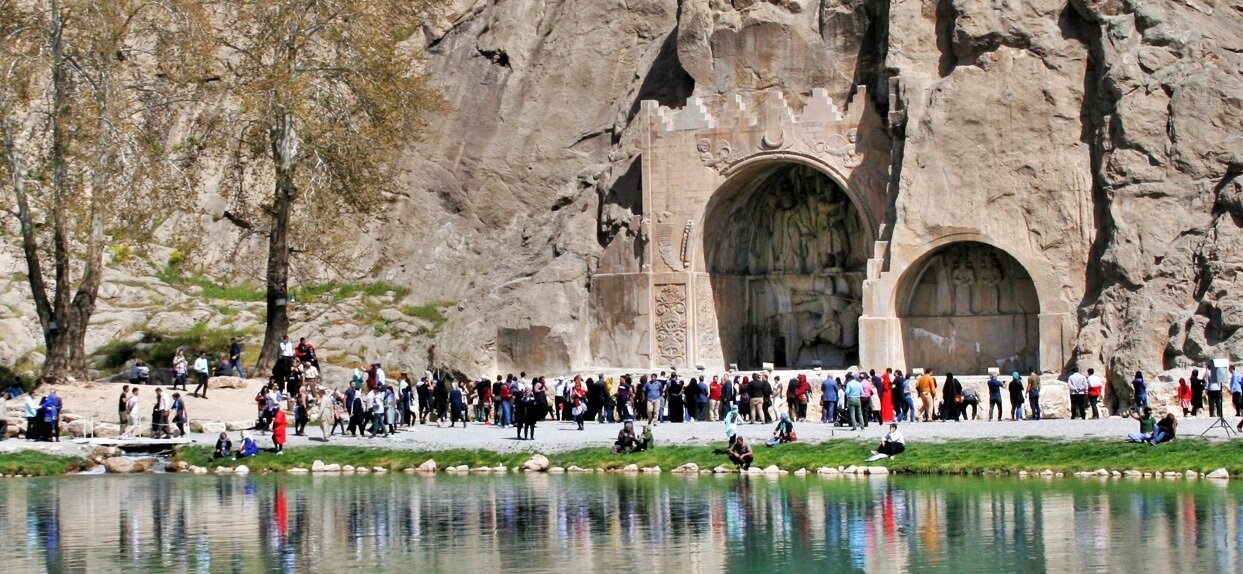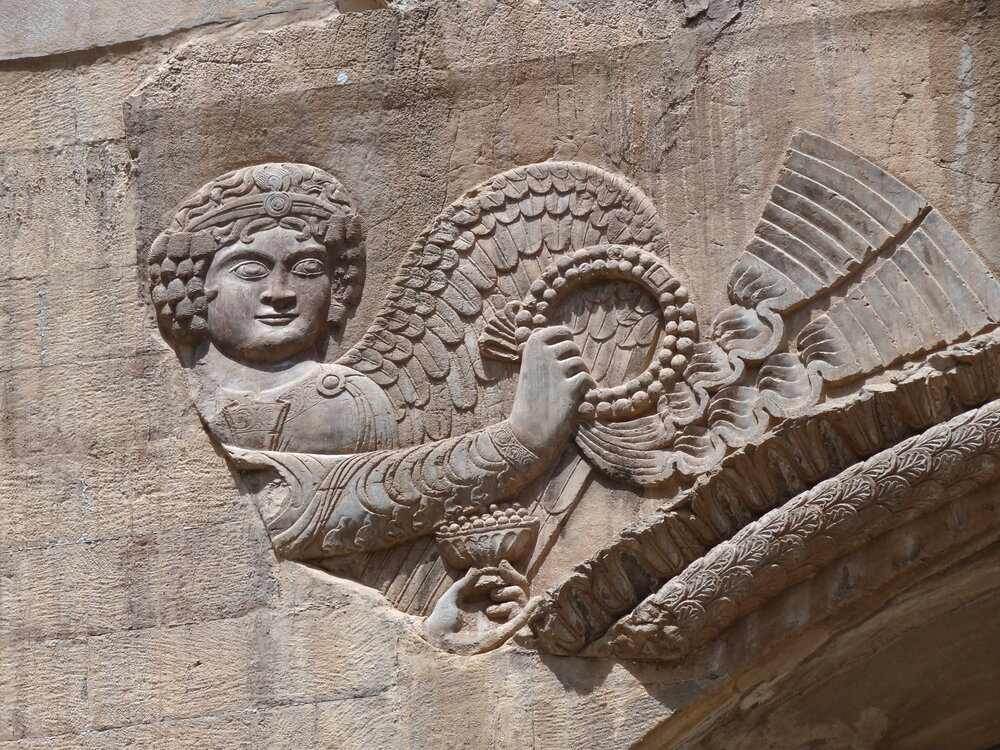Taq-e Bostan: cable car installation strongly opposed for sake of UNESCO label

TEHRAN - The director of Taq-e Bostan, a treasured ancient site in western Iran, has voiced disapproval about the installation of a cable car, saying it will pose an obstacle to a possible UNESCO registration.
The implementation of the cable car as an artificial element will definitely be an obstacle to the world registration of Taq-e Bostan, which is connected to a Sassanid-Parthian cultural heritage axis, Mohammad-Mehdi Feyzghaei said on Saturday.
Taq-e Bostan was originally part of a Parthian royal hunting garden where Sassanians later added their own regal stamp. It features a series of extraordinary bas-reliefs of victorious Sassanid kings, which have been inscribed into the base of a towering cliff.
“We have checked some global examples and the cable car is considered an obstacle for the registration of works in terms of landscape standards, and by implementing it from inside the Taq-e Bostan area, the cable car will be known as an artificial element”
Feyzghaei added that every international evaluator has a checklist that entails questions about the surrounding landscapes.
“We will get a negative mark because a cable car distorts integrated landscapes of the historical site,” the official explained.

“The municipality makes an excuse that it has not heard from [Kermanshah’s] cultural heritage department to mount a cable car system, while we have repeatedly said no to this issue and we have announced our definite opinion less than a month ago.”
Feyzghaei added: “As an architect, I would like to say that the plan of the cable car does not even have an economic justification, because it is not supposed to be used only for spring and summer if you go up it in the cold season, it will not last even an hour due to strong winds.”
Elsewhere in his remarks, the director noted a lot of efforts have been made to preserve Taq-e Bostan’s elements based on the images that we had from 1840 CE.
“We even lowered the ground’s level by some one meter and 40 centimeters, which was a unique task of its kind in the national scene.”
In the end, the official said preliminary work for UNESCO registration of the Sassanid-Parthian axis had been started several months ago. “This axis starts from Anahita Temple and extends to Qasr-e Shirin in Iran and Taq Kasra (also known as the Arch of Ctesiphon) in Iraq.
Taq-e Bostan consists of a series of properties from prehistoric to historical periods such as Morad-Hassel Tepe, an ancient village, a Parthian graveyard, and Sassanid hunting ground. However, the most significant property of the complex belongs to the Sassanid one which comprises two porticos (large and small Ivans) as well as outstanding bas-reliefs from the same period.

The site’s biggest alcove features elephant-mounted hunting scenes on the sidewalls and highlights the coronation of Khosrow II (r 590–628), beneath which the king rides off in full armor and chain mail (half a millennium before the European Black Prince made it fashionable).
The second niche shows kings Shapur III and his Roman-stomping grandfather Shapur II. To the right of the niches is a fine tableau again showing Shapur II (r 379–383), in which he is depicted trampling over the Roman emperor Julian the Apostate (whom he defeated in 363) and receiving a crown of blessings from the Zoroastrian god Mithras.
Kermanshah, formerly Bakhtaran, the capital of Kermanshah province, was founded in the 4th century CE by Bahram IV of the Sasanian dynasty. Conquered by the Arabs in 640, the town was called Qirmasin (Qirmashin). Under the Seljuk rule in the 11th century, it was the chief town of Kordestan. The Safavids (ruled 1501–1736) fortified the town, and the Qajars repulsed an attack by the Turks during Fath Ali Shah’s rule (1797–1834). Occupied by the Turkish army in 1915 during World War I, it was evacuated in 1917. The construction of a road in the 1950s over the age-old Khorasan track added considerably to the importance of the city.
AFM
Leave a Comment